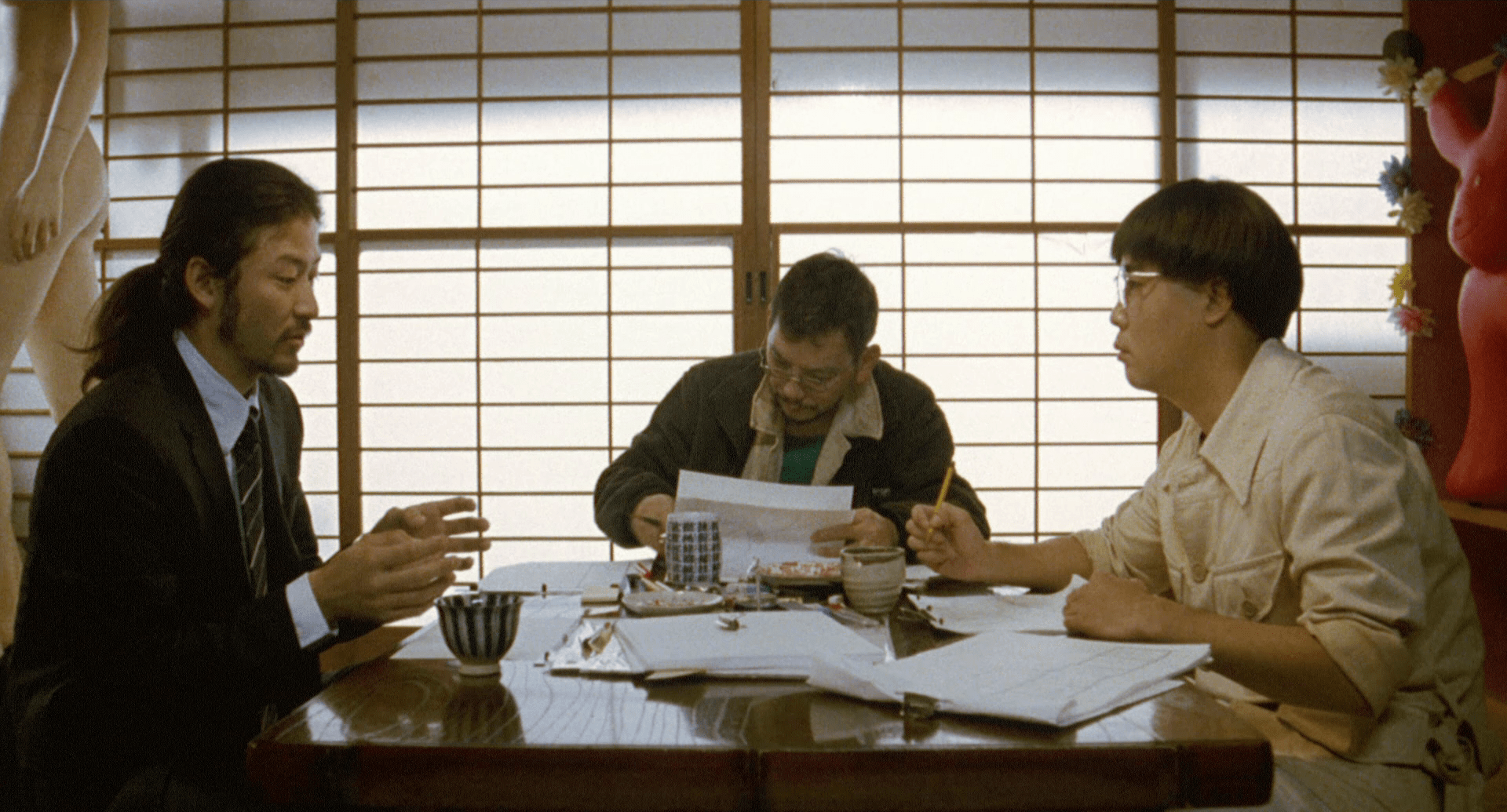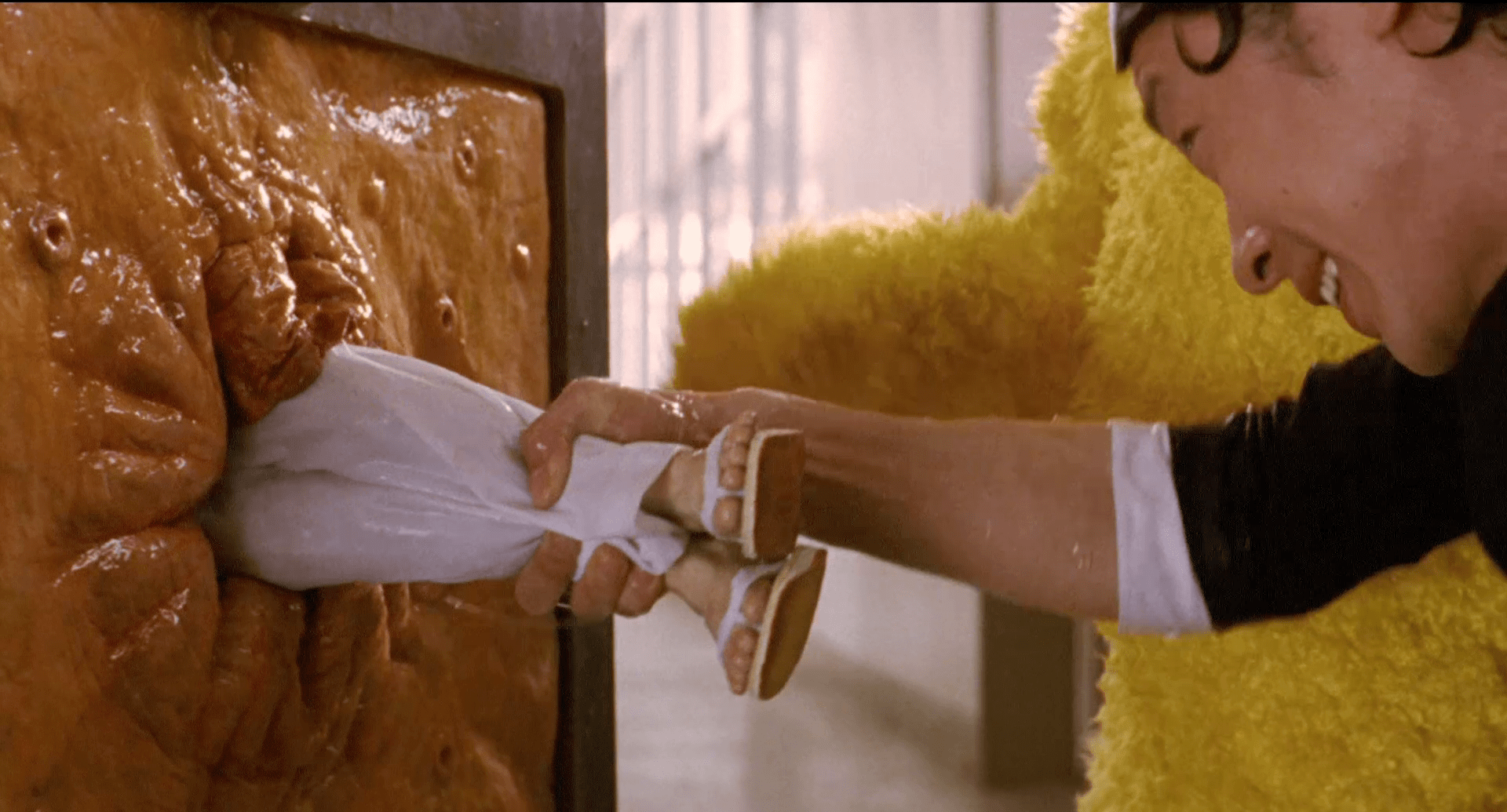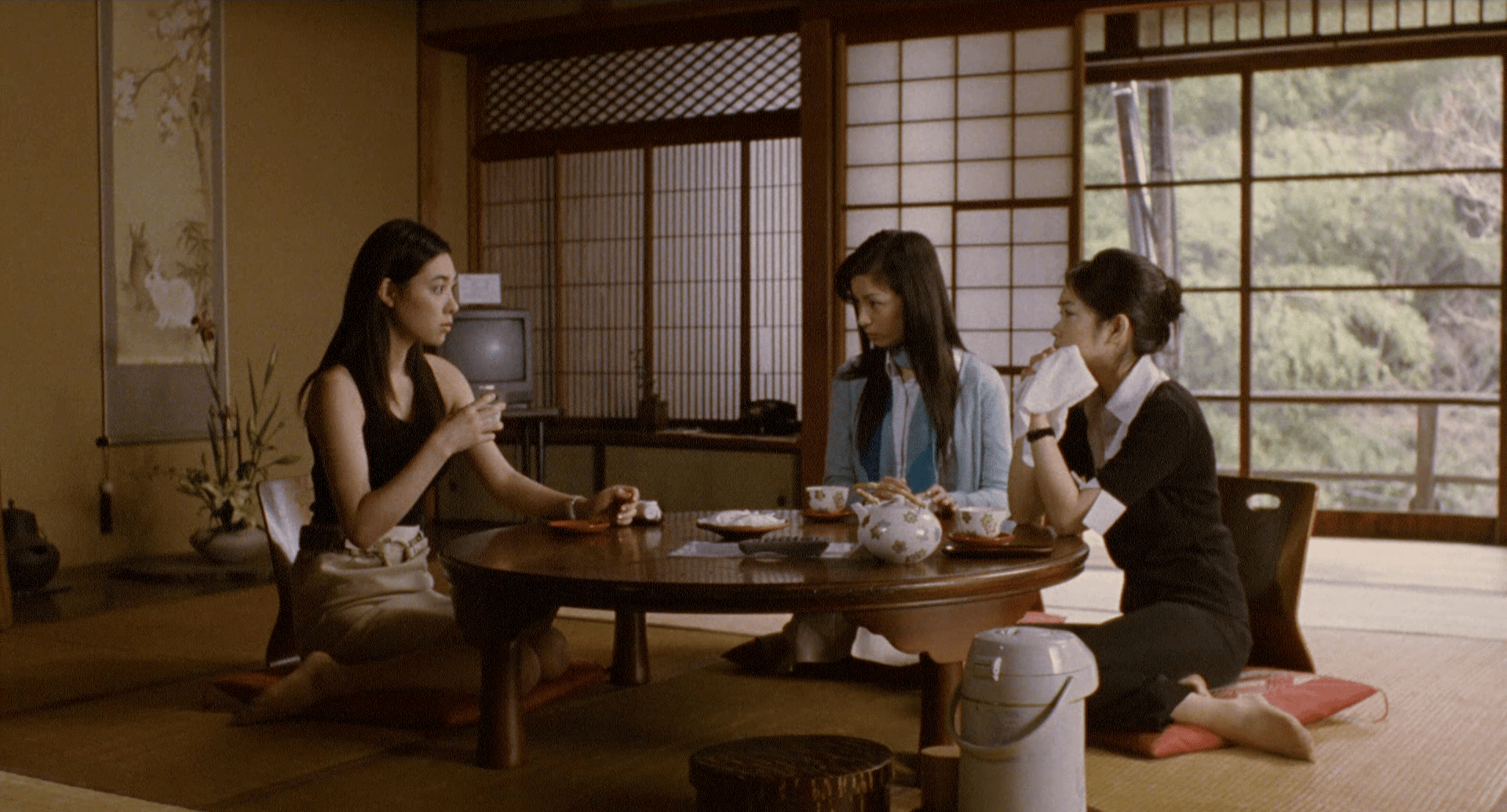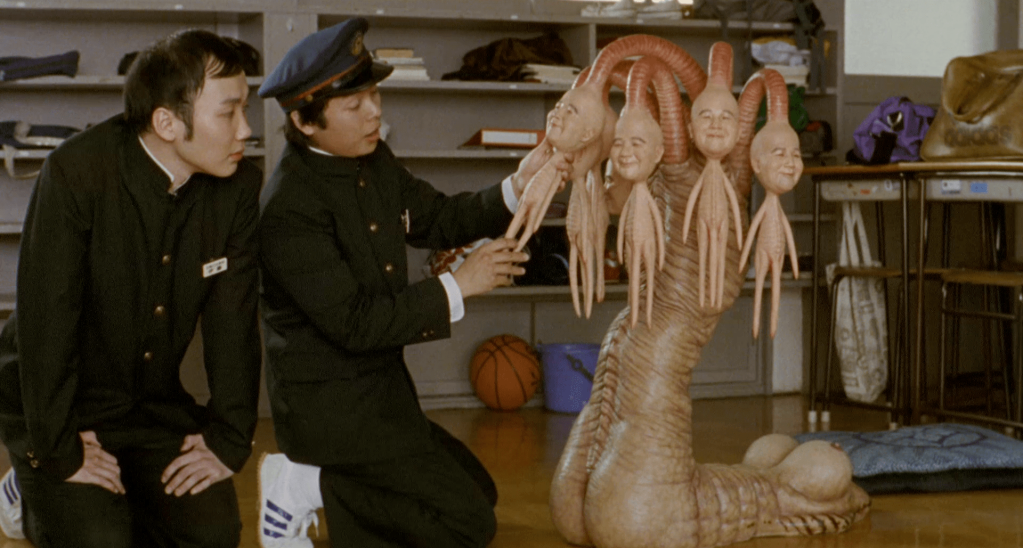Introduction
Shunichiro Miki might not be a prolific Japanese director – his oeuvre consists merely out of three features, two of his features are extra-ordinary and quite unforgettable experiences: Funky Forest: The First Contact (2005) and its sequel The Warped Forest (2011) – both released on blu-ray by Third Window Films. What makes the first of these comedy narratives so unforgettable? Lets find out.
Review
Katsuichi Tanaka (Susumu Terajima), who works as a teacher, dreams of attracting female attention by performing traditional Japanese dances. His younger brother Masaru (Tadanobu Asano), a part-time sports coach at the same school, desires to charm girls with his lyrics and guitar riffs. The youngest brother Masao (-) just munches snickers while either defying Masaru or listening to his music.
English Teacher and amateur DJ Takefumi (Ryō Kase) is aching to know how Nochi (Erika Saimon) feels about him.Nochi is unable to consider them lovers, as love has not physiologically hit her yet. Takefumi’s mind wanders off, realizing that vinyl albums take the listener on a cosmological journey – every album a different universe.
The Babbling hot spring Vixens, who turn on the world with a smile, decide one day to visit a Ryokan. They encounter Katsuichi. Their kind smiles and interest in him do not only charm him, but subtly seduce him, enflaming his phallic desire and fantasy. Niko (Kazue Fukiishi), informs Ichiko (Chizuru Ikewaki) and Miko (Machiko Ono) that her friend Takefumi told her that he encountered an alien spaceship and an alien called Piko-Riko.
Funky Forest: The First Contact, a surrealist anthology sci-fi comedy, is not for everyone. Due to the episodical structure of the narrative, the spectator is thrown into a mixture of sense and nonsense with, at first, little to no ability to orient himself. The spectator goes from the mundane to the bizarre and extra-ordinary, from the silly and irrelevant to the sad and serious, from conversational moments to sudden musical instances with or without estranging dance-routines.
The spectator is soon led to wonder if there is a link between the seemingly unrelated episodes, the little vignettes, the short intermezzos, and the punchlines. Is there a certain narrative thread that, by sewing some elements of the small narratives together, creates a certain backbone for Miki’s Funky Forest?
In a certain sense, there is. Not only are the various narrative fragments (i.e. The Unpopular-With-Women Brothers, Nochi and Takefumi, and Babbling hot spring Vixens) narratively sewn together as Funky Forest unfolds, but two themes dictate most of the content of the stories: the dimension of romance and the theme of our polymorphous nature of our sexuality (Narra-note 1).
Many of vignettes highlight the eternally confusing dynamic of romance between women and men, a confusion that rests on an irresolvable misunderstanding between the sexes due to a difference in subjective fantasies. Masaru is trying to solve the riddle of the female heart with music, Katsuichi with traditional dance. Nochi is waiting for the moment when Takefumi reveals his phallic shine that can hook her desire and enliven the Eros within her body. Takefumi, who mistakenly believes Nochi is in love with him, remains blind for Nochi’s subjective position and misses her as subject within their interactions (Narra-note 2). Ms. Kikuchi (Rinko Kikuchi), the class president, tries to teach the class during homeroom the emotional storm the game of romance can create within a subject – from subtle shy confessions, expressing doubt about the other’s love, to verbal violence directed to the deceitful nature of the other.
Radically split from the speech-related confusion between the sexes, Miki visualizes, with a deadpan seriousness but quirky touch, the fragmentary state of our sexuality (e.g. oral, anal, … etc.) and the importance of the phallic lure for subjective fantasy. The controls of Takefumi’s speakers, for instance, resides behind two small cupboard doors upon which a girl’s underwear is painted on. The rhythmically unsheathing of a sword and the gun function as subtle phallic signs. The strange musical creature-instruments with vaginal-like openings, tentacles that need to be anally entered, or with buts, boobs, and human-like protrusions confront the spectator eccentrically with the state of his own sexuality. Things like masturbatory-like acts, long nipples, and phallic bloodsuckers further illustrate the part-objectal nature of our sexuality.
Whether the spectator can enjoy Funky Forest is function of his position. Can he give himself over to the quick concatenation of narrative fragments and non-sensical pun-like intermezzos or not? Can he endure the initial lack of context that marks the fleeting narrative moments? Are the subtle teasers within the stories and the deadpan-delivered punchlines enough the keep him engaged (Narra-note 3)? Those who give Funky Forest a chance will encounter an estranging, but strangely charming comedy about male blindness within romance and the fracture state of our sexuality.
The composition of Funky Forest: the first Contact is rather straightforward – a mix of fixed and dynamic shots (e.g. zoom-ins, zoom-outs, tracking movement, …etc.), but is spiced up by Miki’s eccentric use of jump-cuts and cut-to-blacks and other decorative elements like slow-motion. The eccentricity and absurdity of Funky Forest is most evident in the sets and objects on the set (e.g. space-ship interior, sea-creature-like furniture, the navel-anus machine,… ), the various costumes (e.g. the latex squid suit, cute devil/lobster costumes, … etc.) and the integration of some serviceable visual effects (the sci-fi environments, space-ships, alien-creatures, laser beams, integration of 2D animated elements, … ) and some pleasant animation.
Funky Forest: The First Contact is strange, mundane, surprising, deadpan funny, funky, and ethereal all rolled into one. Miki’s anthological comedy is, as a result, not for everyone. Yet, those spectators who are open to such an unforgettbale eccentric mix will not only find a funny but highly recognizable exploration of the misunderstanding that marks the interactions between the sexes, but also one of the most innocent but bizarre visualizations of our fractured state of our sexuality.
Notes
Narra-note 1: The quite nonsensical Manzai skits by The mole Brothers – skits with lots of slapping, fake fighting, and ‘blind’ stupidity – do not follow one of the thematical threads.
Narra-note 2: The state of their relationship is beautifully illustrated by Takefumi’s strange dream. This dream does not only function as a visualisation of Takefumi’s inability to phallically charm Nochi but also reveals his fundamental misunderstanding of her subjective position. Nochi’s ‘Show me your dancing!’ is nothing but a demand for him to show her that he possesses the impossible phallic object that can capture her desire. His ‘Show me your feelings!’ reveals that Takefumi assumes the imaginary capture of desire has already taken place.
Narra-note 3: An example of such kind of teaser is Takefumi mentioning he had a strange dream just before the scene is finished. Another teaser is Katsuichi inviting one of the vixens to a singles picknick. Another one is Nochi’s strange dream.






2 Comments Add yours